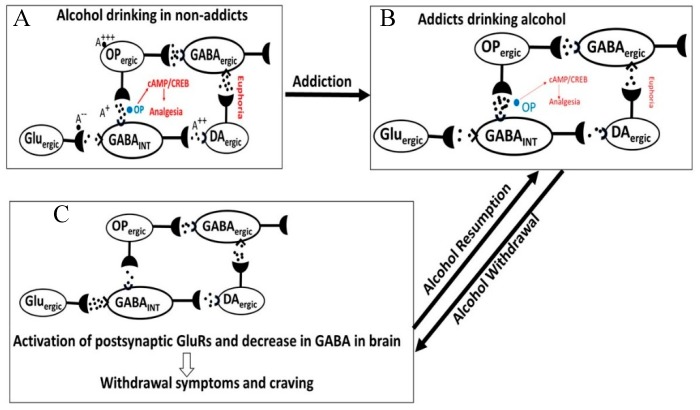Figure 13.
Possible mechanisms underlying the reinforcing and analgesic effects of alcohol exposure. (A) Acute alcohol exposure induces eOP release but inhibits Glu release from Gluergic neurons, resulting in suppression of GABAergic neurons. Downregulation of GABAergic neurons disinhibits DAergic neurons, resulting in an increase in DA release and ensuing reinforcement. Opioid exposure induces analgesia via cAMP/CREB signaling. (B) In addicted subjects consuming alcohol, OPergic, Gluergic and GABAergic neurons respond like the non-addicted subjects, but DAergic neurons and the analgesic pathway are less responsive. Cumulatively, addicted subjects drinking alcohol exhibited poor opioid-induced analgesia and euphoria. (C) Alcohol abstinence in addicted subjects result in hyperactivity of Gluergic but downregulation of GABAergic neurons, causing neuronal excitation and the withdrawal symptoms. Alcohol resumption restores opioid’s analgesic potency but to a lesser degree, but eOP release is restored.

